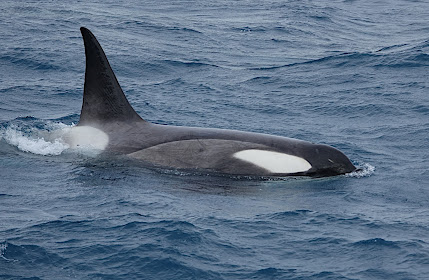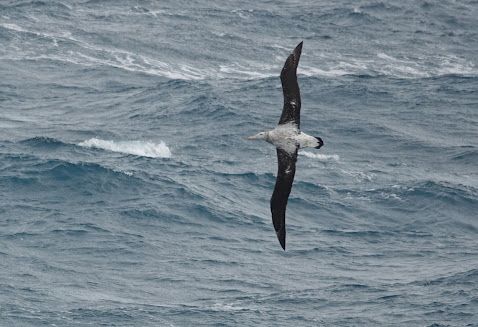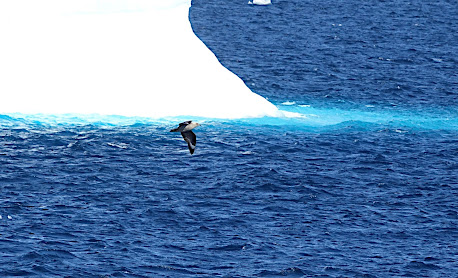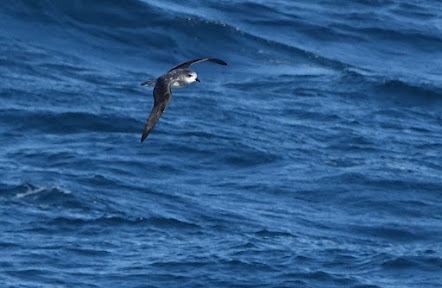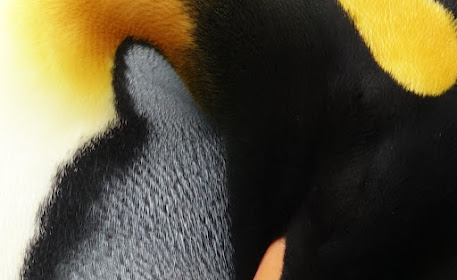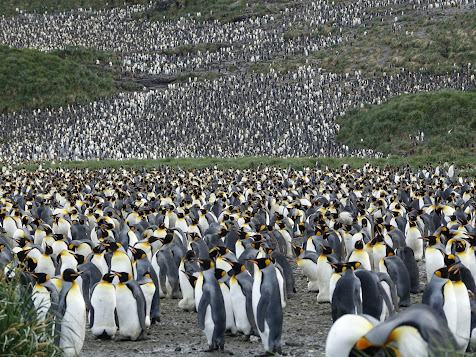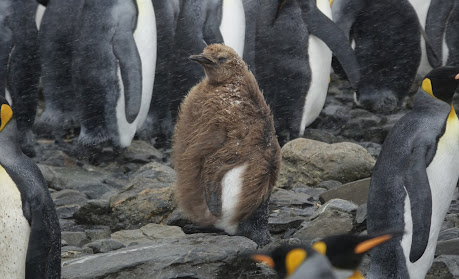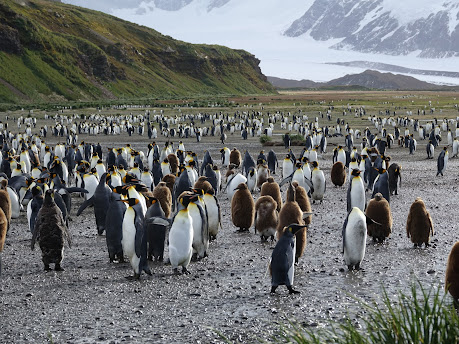The Southern Ocean is one of the most impressive of pelagic destinations, with huge, challenging seas circling the Antarctic continent, punctuated by islands with alluring names, such as Kerguelen and Crozet. Many of these islands have leant their names to some incredible seabirds, most of which I am unlikely to ever see, but on my recent trip, I got chance to look for some of these wonderful birds, whilst also keeping a keen watch for a range of exciting whales and dolphins. The birding was great, though we had some quiet periods when in areas of continual deep sea, but the expectations were high and kept us watching.
I have split my write-up, which is focussed mainly on the birds, into four sections: Ushuaia to the Falkland Islands; the Falklands to South Georgia; South Georgia to Antarctica, and; the Drake Passage (Antarctica to Cape Horn). We had pretty good conditions throughout, with the worst swell being on the first two legs and conditions steadily improving, and so by the time we crossed the Drake, it was more like a lake!
Early morning on deck, with a light snow covering. The portside bridge wing is top left.
Becca, me, Philip and Colin celebrating our first Emperor Penguin in the Weddell Sea.
Most of the time we birded on the top deck from the bridge wings, where we got a good 180 degree view, with shelter and the opportunity to quickly move to the other side of the ship if desired. On 'sea days' I would try and spend as much time on deck as possible, as did our small gang of birder mates, only heading inside for meals and sleep. I took radios so that if one of us went for a snooze or was on the other side of the ship, we could relay news and this worked well.
Immature Wandering AlbatrossDuring the trip we saw a fab array of seabirds, including six albatross species, but missed a few expected species, such as Atlantic and Antarctic Petrels. We also failed on rarer tubenoses, so didn't catch up with Kerguelen or White-headed Petrels, both of which are seen occasionally on this route. Perhaps we were a bit too early in the season. On the positive side, we saw a good number of Soft-plumaged Petrels, Grey Petrels, Grey-backed Storm Petrels and Black-bellied Storm Petrels which others have struggled to find. We did fantastically for cetaceans with 14 species during the trip, including three Orca species/ecotypes (Antarctic A, Pack Ice B2s, and D), three beaked whales, four rorquals and four dolphin species.
Type B2 OrcaThe Beagle Channel, Ushuaia to the Falkland Islands 16-17/01/25
The gentle waters of the Beagle Channel on our first evening gave us great views of Black-browed Albatross and Southern Giant Petrel, two species which would be ever-present companions of our voyage (pics below).
We looked hard for Magellanic Diving Petrel but without success; perhaps we didn't get far enough before dark enveloped the ship. We did however see big ginger Chilean Skuas, a winter-plumaged Arctic Tern in with a flock of larger South American Terns, Sooty Shearwaters and Magellanic Penguins. A pod of Dusky Dolphins raced past and we saw a few Humpback and several Sei Whales before nightfall. This felt like a good start.
Chilean Skua
We hit the Atlantic Ocean at some point in the night and this stopped any more sleep, as we slipped down our bunks one way and moments later, slipped all the way back to the other! Nevertheless, we were out on deck early to see what new birds would be around. Shortly, we began to see our first prions, the identification of which would be a constant challenge over the next week or so. With washed-out black 'Ws' on their upperwings, most seemed to be Slender-billed Prions which fitted with our location.
A few tiny diving petrels were flushed by the ship or scudded past, but all those we saw well seemed to be Common Diving Petrels - still a new bird for me! Sooty and Great Shearwaters powered past the ship adding a touch of the familiar to the proceedings. There were plenty of Wilson's-type Storm Petrels, which we tentatively identified as Fuegian, mainly due to the location, but with some birds showing pale underwing covert markings adding credence to our judgement. Great Shearwater, above, and Wilson's-type Storm Petrel, presumably Fuegian.
As we travelled further out into the ocean, other species began to turn up and our excitement grew. White-chinned Petrels eased past, another species that would become one of the most regular tubenoses we would see during our trip. I mentioned that we needed to check any floating kelp mats for Grey-backed Storm Petrels, as this was said to be a good place to find them. To our delight, the first big kelp mat we past had an attendant Grey-backed Stormy, and this was the first of many we saw before we reached the Falklands.
Grey-backed Storm Petrel.
Falkland Islands to South Georgia - 19-21/01/25
It turns out that South Georgia is really remote! It is about 1,500 km from the Falklands to South Georgia and so we had a good couple of days at sea to get there. Things picked really picked up as we headed out of Stanley and east. Large numbers of Sooty Shearwaters were feeding offshore, and we began to see our first pterodromas of the trip, Soft-plumaged Petrels. This was an exciting moment, as these crazy gadflys threw arcing shapes across the turbulent ocean. The neck collar stood out even at a distance, and they looked slighter than the chunky-billed Desertas Petrels I had seen off Madeira a few years ago.
Late afternoon and we picked up our first Grey Petrels and Black-bellied Storm Petrels, neither of which we felt sure of seeing, but had hoped for. Grey Petrels had a feel of a small Cory's Shearwater and the distinctive languid flight made up for their rather indistinct appearance. The BBSPs were very cool, chunky Storm Petrels, flashing white underwings and bellies as they skipped through the wave troughs.
Grey Petrel top, and Black-bellied Storm PetrelA little later and the bird I had most wanted to see, not just on this trip, but in my whole life, hove into view, the collossus of the seabird world, a Wandering Albatross. The huge bird rose up out of a wave trough in slow motion, on perfectly straight wings and effortlessly glided towards us, dwarfing nearby Black-brows, which until this moment seemed impossibly large themselves. No words can describe the magic of this moment and my rather shaky pictures do not convey the majesty of this spectaculr bird.
This bird was as white as Wanderers become, so presumably an adult male Snowy Albatross, which we would later see at nesting sites on South Georgia.We were obviously passing through a good feeding area as we picked up further Snowy Albatrosses and then our first Northern Royal Albatross, identified by its all black wings, white tail and black wedge on the underside of the primaries. It didn't come close, but was distinctive. Nearly as big as the Snowys, this huge bird had travelled all the way from Chatham Island or possibly New Zealand, presumably doing a feeding circuit right round Antarctica - amazing!
Northern Royal Albatross. Class!
As if the day couldn't get any better, we then picked up a Southern Royal Albatross, another whopper with plumage more similar to the Snowys, but with pure white tail and the white bleeding backwards from the front edge of the wings and black 'lips' which was surprisingly obvious even at range. Southern Royals breed mostly on Campbell Island, south of New Zealand. We also began to see more Snowys including a few immature birds.
Southern Royal Albatrosses.Top two considered to be 3rd or 4th cycle immature Snowy, with bottom most likely a fourth cycle Snowy.
This Wanderer is intriguing. It looks a bit like a Southern Royal, but there is black in the tail and there are big central white patches on the inner wing. Is it just an older immature Snowy? Due to the location this is the most likely, but the piano key tail is interesting.
...
Alongside the giant albatrosses, we picked up our first Grey-headed Albatross among the commoner Black-brows. The dark head and black beak was obvious, as was the larger amount of black on the underwing, so this was a distinctive and very handsome bird. My second most hoped-for albatross of the trip was the exquisite Light-mantled Albatross which began to appear as we passed along the north coast of South Georgia, but I will do a separate blog about this special bird.
Grey-headed Albatross
Another charismatic species which I had forgotten we might see in the waters around South Georgia was (Greater) Snow Petrel, a dazzling species more associated with Antarctica to the south. It really is an incredibly beautiful seabird, and the sight of them dancing past giant blue glaciers and icebergs will live long in my memory.
Heading south: South Georgia to Antarctica
We were now well south of the Antarctic Convergence, so into the colder waters influenced by Antarctica. Consequently, we started picking up new seabirds among those familiar faces we had grown accustomed to. Blue Petrel was a species I had hoped to see, and they proved to be common on this leg, sometimes passing in little groups. They were easy to pick out from the similar-looking Antarctic Prions, with completely white undesides (without the dark undertail of the prions), dark hood and white tail tip. They flew much more like little pterodromas, being more agile and were identifiable at range with practise.
After the excitement of our Type D Orca, we chilled out watching our first Pintado (Cape) Petrels cruising past the ship, an absolutely stunning species, which increased in abundance as we approached the South Shetland Islands, our first Northern Giant Petrels, along with hordes of Antarctic Prions and occasional Snowy and Light-mantled Albatrosses. We passed not far west of the South Orkneys, so a handful of Snow Petrels we saw in that stretch of sea could conceivably have been Lesser Snow Petrels, which breed on those islands. These two are a possible future split.
Snow Petrel, Antarctic Prions, Pintado Petrel, top and Light-mantled Albatross
At Elephant Island, the sea swirled with Pintado, White-chinned and both Giant Petrels, with stacks of Black-browed Albatrosses and our first few Southern Fulmars, but our attention was taken away by the appearance of Type A Orcas...Later that day, we saw over 700 Southern Fulmars stream past in a series of large flocks, presumably heading for their breeding colonies in Antarctica, having returned from feeding trips.
Southern FulmarsAs we entered the Weddell Sea, wildlife abundance went through the roof, with huge numbers of Adelie Penguins, flocks of Snow Petrels and Pintado Petrels, but species diversity really dropped. Besides the Brown Skuas patrolling the penguin colonies, we saw several South Polar Skuas including some smart pale birds and plenty of Kelp Gulls.
The Last Leg: The Drake Lake
As mentioned earlier, our return across the notorious Drake Passage was a little bit of an anticlimax with 1-2 metres of swell and little wind. This gave us great conditions for spotting cetaceans, and Macaroni Penguins (!) but not so good for seabirds as the lack of wind was not conducive to birds like pterodromas that rely on it for lift. To prove the point, we saw many small parties of Wilson's Storm Petrels resting on the sea and this could have been why we didn't see some of the rarer tubenoses we'd hoped for on this stretch.
Towards Cape Horn the wind picked up and we passed through an area with sea mounts and a number of albatrosses including all three great albatrosses were present, along with plenty of Sooty Shearwaters, Black-brows and Southern Giant Petrels, all feeding.
One of the very few immature Black-browed Albatrosses was this gorgeous bird in the Drake.
Northern Royal Albatross, top, and two pics of the same Southern Royal Albatross.
We shortly arrived in the mouth of the Beagle Channel, where we were greeted by a horde of Sei Whales, blowing across wherever you looked. Chilean Skuas, Imperial Cormorants and Magellanic Penguins began to appear, heralding our return to the mainland.





